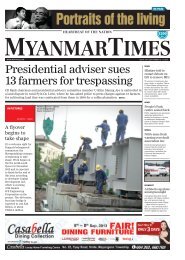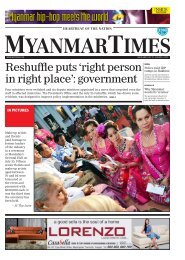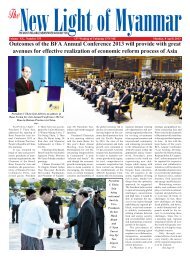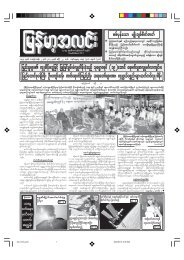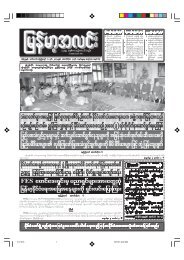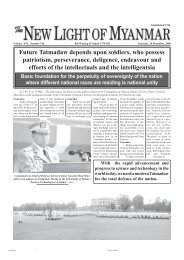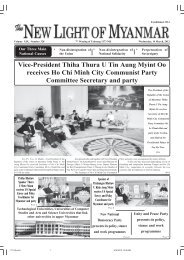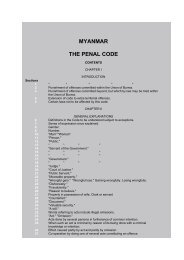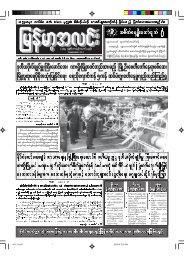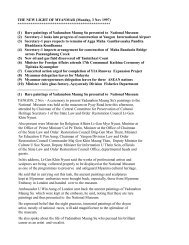Changing Buddhist Practice in Burma - Online Burma Library
Changing Buddhist Practice in Burma - Online Burma Library
Changing Buddhist Practice in Burma - Online Burma Library
Create successful ePaper yourself
Turn your PDF publications into a flip-book with our unique Google optimized e-Paper software.
Purification and dependency between k<strong>in</strong>g and monk<br />
The relation between the lead<strong>in</strong>g monk, who would normally have been the<br />
k<strong>in</strong>g's teacher, and the k<strong>in</strong>g created the 'balance of power': "The stronger the<br />
k<strong>in</strong>g, the more likely he would be to impose his choice; the stronger the<br />
Sangha, the more likely they would be to impose theirs on the k<strong>in</strong>g"<br />
(Mendelson 1975: 53-4). Nevertheless, it cannot readily be assumed that<br />
thathanaba<strong>in</strong>g 26 was a s<strong>in</strong>gle voice represent<strong>in</strong>g all the sects <strong>in</strong> Sangha. There<br />
were complex relations with<strong>in</strong> the monk organization; Mendelson thus<br />
summed up: "The monastic l<strong>in</strong>eages...cut across other factional divisions <strong>in</strong><br />
the Sangha, just as the holders of the office of thathanaba<strong>in</strong>g represented<br />
different po<strong>in</strong>ts of view either promoted by the royalty or supported by the<br />
monkhood at large" (Mendelson 1975: 57).<br />
Mendelson, who has studied the history of Sangha from medieval times to the<br />
present, observes that over time two important factors determ<strong>in</strong>ed change <strong>in</strong><br />
Sangha (1975: 25). First, there was the "splitt<strong>in</strong>g off of sectarian groups from<br />
the ma<strong>in</strong> body of the Sangha" when "these new groups justify the split...<strong>in</strong><br />
terms of a redressal of laxity which creeps <strong>in</strong>to the Sangha at large". The<br />
splitt<strong>in</strong>g group usually cited 'reassertion of V<strong>in</strong>aya' (i.e. for a purer or cleaner<br />
monastic rule of conduct) as the ma<strong>in</strong> reason for the breakaway. Second,<br />
depend<strong>in</strong>g on the 'strong' or 'weak' lay authority, the lay would usually react<br />
<strong>in</strong> one of two dist<strong>in</strong>ct patterns: a weak lay authority [weak k<strong>in</strong>g] might "try to<br />
manipulate the sectarian break to its own advantage...favour<strong>in</strong>g and even<br />
creat<strong>in</strong>g a sect out of <strong>in</strong>cipient dissatisfactions", while a strong lay authority<br />
38




